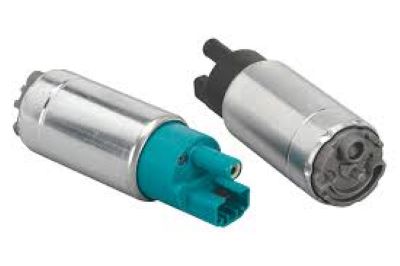So, the process begins with understanding how faulty fuel pump manifests itself and working to eliminate them one by one. Some of the most common symptoms are hard starting, engine stalling, loss of power on acceleration and other similar problems along with a whine coming from the fuel tank. More often than not these symptoms are related to the fuel pump not providing enough fuel pressure (usually 30-80 psi) at the correct rate of delivery to keep the engine running.
Verification of the Fuel Pump ProblemThe very first step in diagnosing a TP element concern is to confirm that... the fuel pump is bad. You'll need a fuel pressure gauge (an item which costs anywhere from $30 to $50) to measure the pressure at the fuel rail. Likewise, a pressure too low for the manufacturer’s specification means there is something wrong with your fuel pump, fuel filter, or fuel pressure regulator. If you do not have a fuel pressure gauge, you can listen for the hum of the fuel pump when you turn your key on. Other signs include a lack of noise, which could mean the pump isn't getting power or has died.
If everything is alright, check the fuel pump relay and fuse. These components regulate the fuel pump depending on power supply. Relay or Fuse malfunction: A failure in the relay or fuse may prevent the pump from operating, consequently causing your vehicle to not start. A blown fuse or failing relay is a relatively low-cost repair, running about $20 to $30,and might fix the issue without necessitating replacement of the whole pump. A 2019 report from the National Institute for Automotive Service Excellence (ASE) stated approximately 15% of vehicles with fuel system issues have relay or fuse-related complications.

Fuel filters are also a critical part of self-induced fuel pump performance. Similarly, a clogged filter could prevent fuel from getting to the engine — symptoms similar to those of a dying pump. Some fuel filters need replacing once 30,000 miles have been racked up due to wear. If the filter is blocked, replacing it might be all you need to do to get fuel flowing properly again without having to go through the trouble of getting a new pump.
This includes the electrical connections to the fuel pump. Corrosion or loose wires may also be the cause of a cutoff in power that results in an on-off pump operation at times if not total failure. Perform a basic examination of the wiring and then clean up any corroded connections before securing them to see if that clears it up. When a pump is drawing high current it can be any trouble, but in general if the motor will fail internal of it.
Sometimes the problem is not with the fuel pump but with the fuel pressure regulator. If the regulator is bad, the pressure can fluctuate and then cause a stall/very hard start or hesitation under acceleration. Before making a decision to replace the pump, another diagnostic step is testing or replacing the regulator.
In 2018, a rash of recalls from large automakers featured defective fuel pumps that were leading to potential engine stalling or loss of power on the road. Both of these situations underscore the necessity of dealing with fuel system problems in their infancy so that additional engine harm does not occur.
If troubleshooting indicates that a new Fuel Pump is necessary, replacing it immediately will allow the car to operate at its full potential and can prevent additional damage to other parts.
